Puggle 101: The Essential Guide
| Origin | United States |
| Size | Small to Medium |
| Height | 13 to 15 inches |
| Weight | 18 to 30 pounds |
| Life Expectancy | 10 – 15 years |
| Breed Group | Designer Dog |
| Affection Level | ⭐⭐ |
| Friendliness | ⭐⭐⭐ |
| Activity Level | ⭐⭐ |
| Barking/Howling Level | ⭐⭐ |
| Pet Friendly | ⭐⭐⭐ |
| Kid-Friendly | ⭐⭐⭐ |
| Shedding | ⭐⭐ |
| Easy to Groom | ⭐⭐⭐ |
| Easy to Train | ⭐ |
Table of Contents
Origin
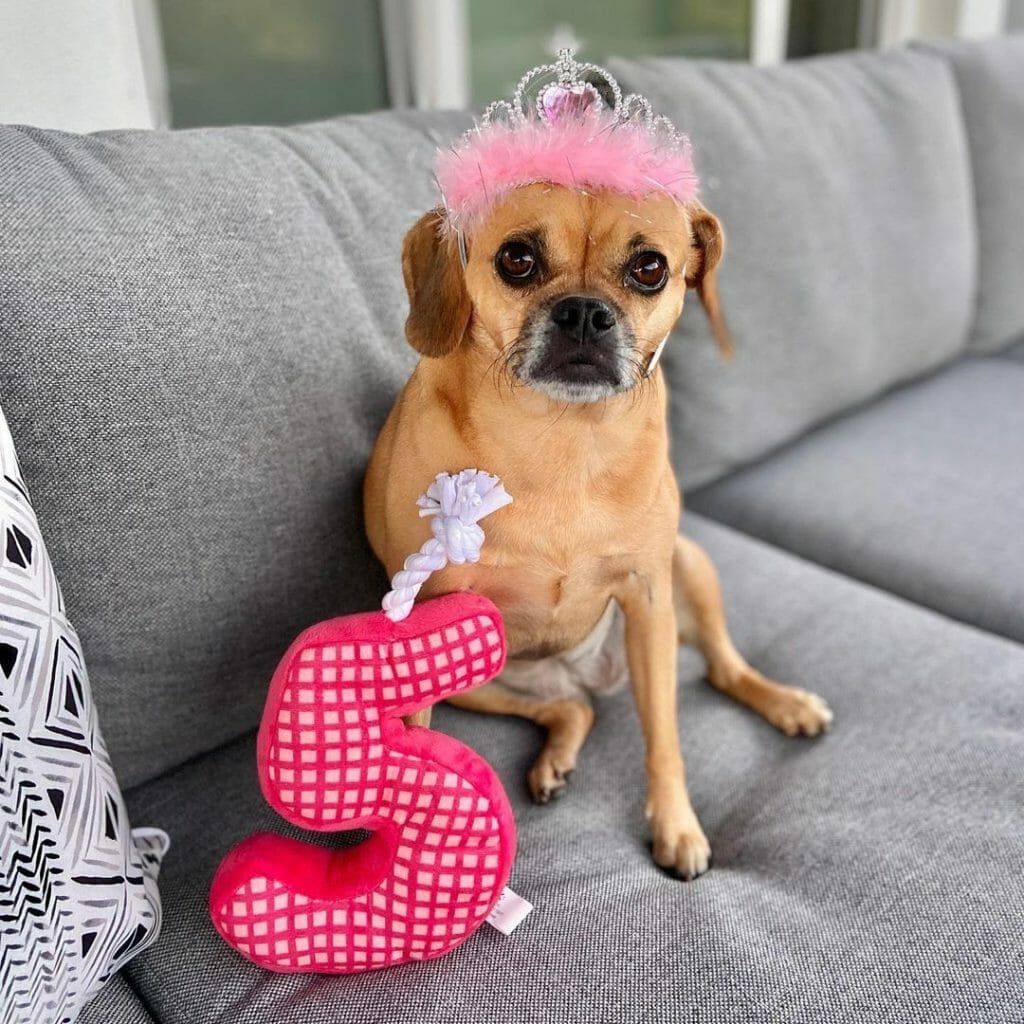

The history of the Puggle does not contain a long list of details. This is a hybrid canine that resulted after mating a Pug and a Beagle. The first dog of this kind appeared around the 1980s in the United States and many people speculate that his coming about was purely accidental. Some claims argue that it was actually intentional and the person who started all of this is Wallace Havens, a Wisconsin breeder. From that, a record was taken which can affirm that Puggles started to exist in the 1980s.
It took at least 20 decades before the Puggle became commercially available and his popularity is soaring continuously. Both his dog parents are already well-known to dog lovers worldwide. He is partly a Pug, a pooch that originates from China, and was widely loved and adored by the royal members as well as by the Emperors.
Also, the Puggle boasts of its Beagle ancestry. This useful dog constantly accompanies humans during hunts, but now, he’s typically treated as a family member. He was further developed in England, but until now, there is no strong clue that could tell us where he’s from exactly. However, due to art depictions and artifacts, a hint suggests that he existed in Greece. The Beagle has a strong sense of smell and that trait is possibly retained by the adorable Puggle.
Appearance
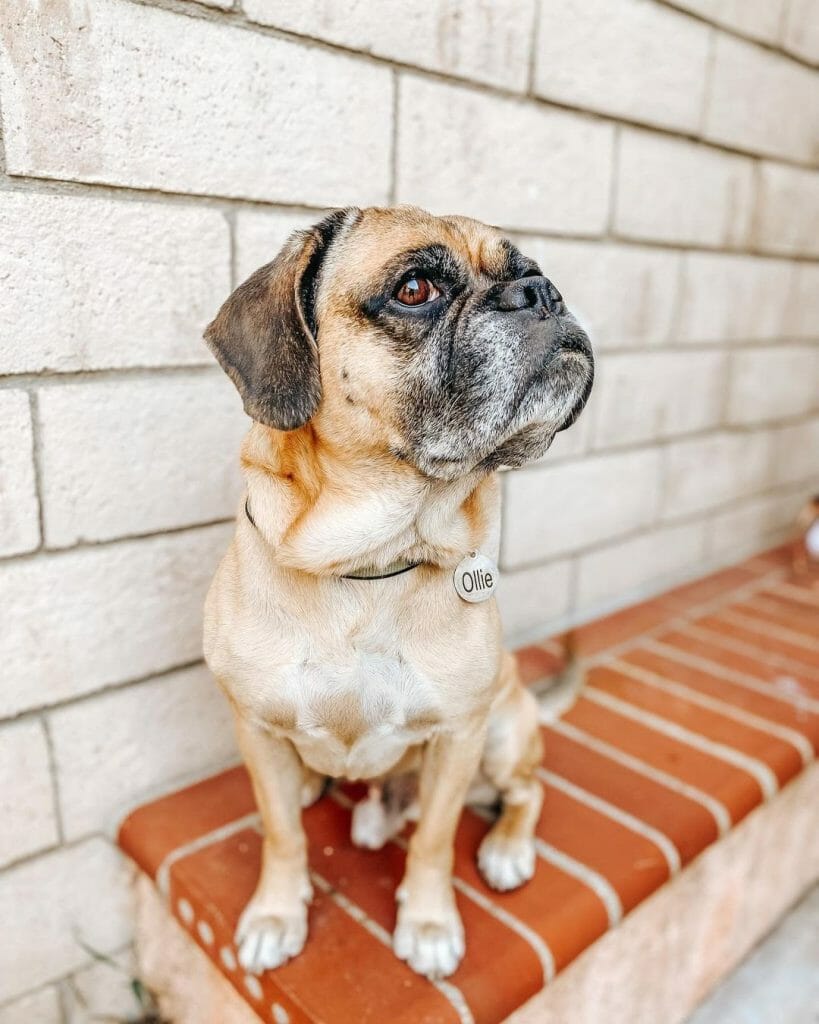

As you would expect, the overall image of the Puggle is a combination of features possessed by both of his parents. There are wrinkles on his face and this feature mostly comes from the Pug. Meanwhile, his snout is prominently longer as it took its trait from the Beagle and this helps in keeping his respiratory system healthy.
You can simply describe the Puggle as a dog with the eyes of a Pug and a Beagle-ish look when it comes to describing the rest of his face. Since there are two breeds involved in making a Puggle, the facial or physical appearance of the dog won’t always be consistent. Expect this small to medium pooch to weigh around 18 to 30 pounds and be as tall as 13 to 15 inches at withers. There are Toy Puggles too and their proportions measure half as much.
Toy dog or not, all Puggles have short double-coats. He has a black mask around his muzzle and is often deemed as a miniature Mastiff. His natural colors only include the following:
- Black
- Tan
- Red
- White
Temperament
There are countless reasons why Puggles are becoming the top choice as pets in several households. Aside from their cute appearance and huggable size, they also have qualities that will instantly make you fall in love with them. You don’t have to worry about unpredictability because as long as the Puggle comes from a trusted breeder, desirable personalities are more likely to show.
See if the Puggle’s behavior ticks your preferences by learning about his affection level, friendliness, as well as activity needs.
Affection
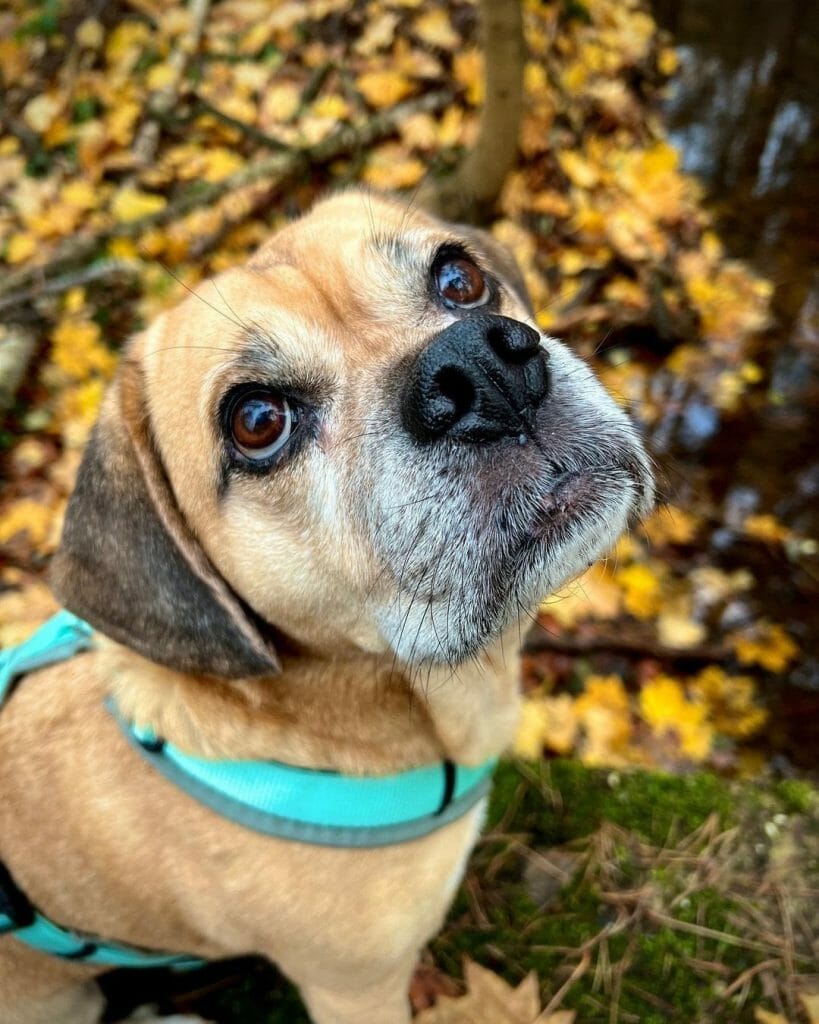

What makes Puggles wonderful family companions are their sweet natures that fit into family life. They are excellent cuddlers which means you have to save a spot for him on your bed or assign a space in your couch for your pooch.
Should you own a Puggle puppy, giving him enough attention consistently right from the start will encourage him to grow closer with all family members. He will learn to love spending most of his time with the people that matter to him and he will also be more open to receiving pets from non-threatening people.
Mostly, a good-natured Puggle also exhibits gentleness and due to his size, he needs to be handled softly too. Sometimes, kids or even some adults would experience having cute aggression, so although we understand how charming a Puggle is, still he won’t do well with rough handling.
To make sure that your buddy grows up to be loving, treating him right, and teaching him good behaviors is the perfect recipe!
Friendliness
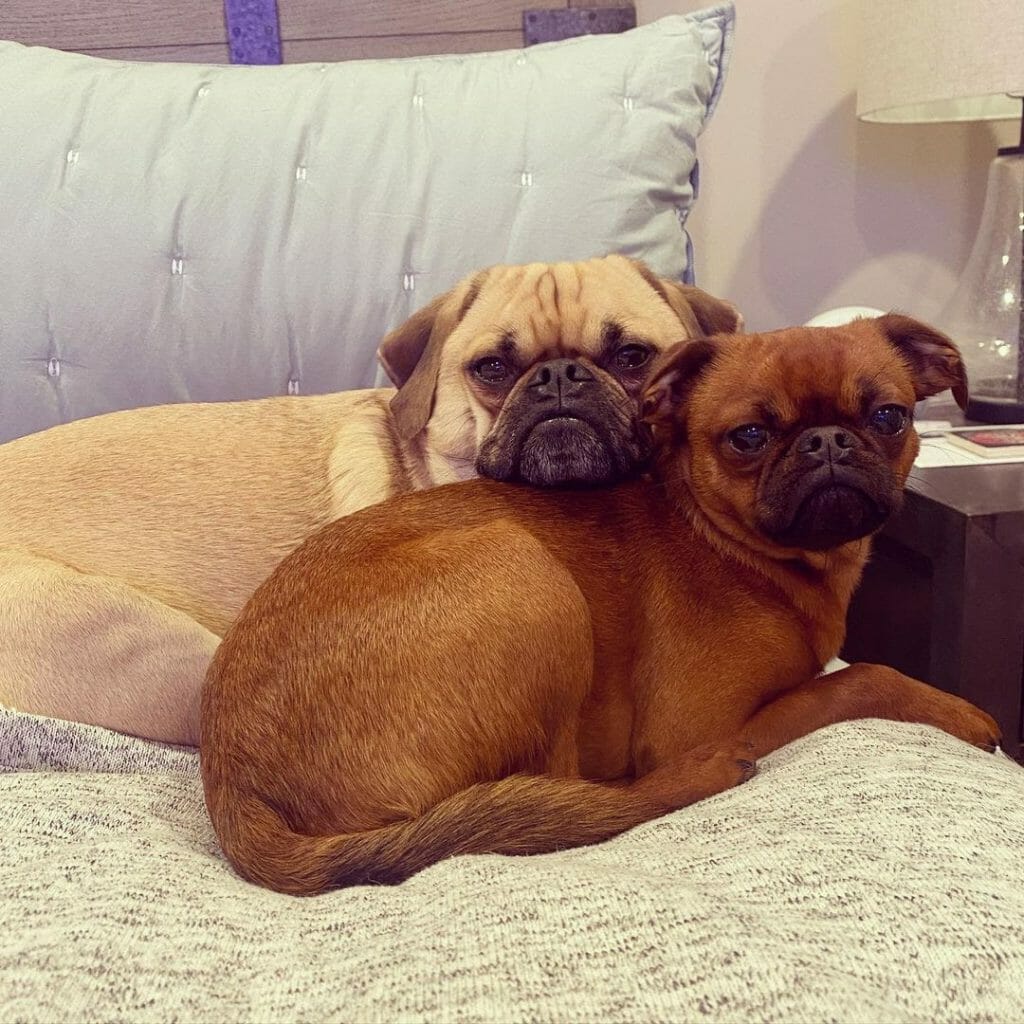

Puggles are super friendly even first-time owners won’t have much difficulty in getting along with them. Naturally, a Puggle puppy craves attention from others and his social needs would require starting friendships. If you have other pets in the house, the Puggle will initiate or reciprocate interactions. Known to be gentle, he surely will be behaving well around other family members. Properly introduce him to your pets, however, since he has a high prey drive and might end up chasing smaller animals.
Additionally, he loves to accompany kids a lot. He is generally suitable for kids of all ages, but still, it is imperative that the children are taught how to play nicely and the pooch must also learn not to be aggressive. When it comes to strangers, Puggles can be easily won over, but there is an initial wariness exhibited. First impressions are highly important and making a good one will encourage the dog to be more approachable toward you. Winning the trust of this lovely Puggle will take some time depending on how socially exposed he is since puppyhood.
Aside from socialization, raising him right and showering him with affection and attention will positively contribute to how he’s going to be as a dog around other people and pets. Help him avoid experiencing traumas, so he won’t end up becoming allergic to those around him.
Activity Level
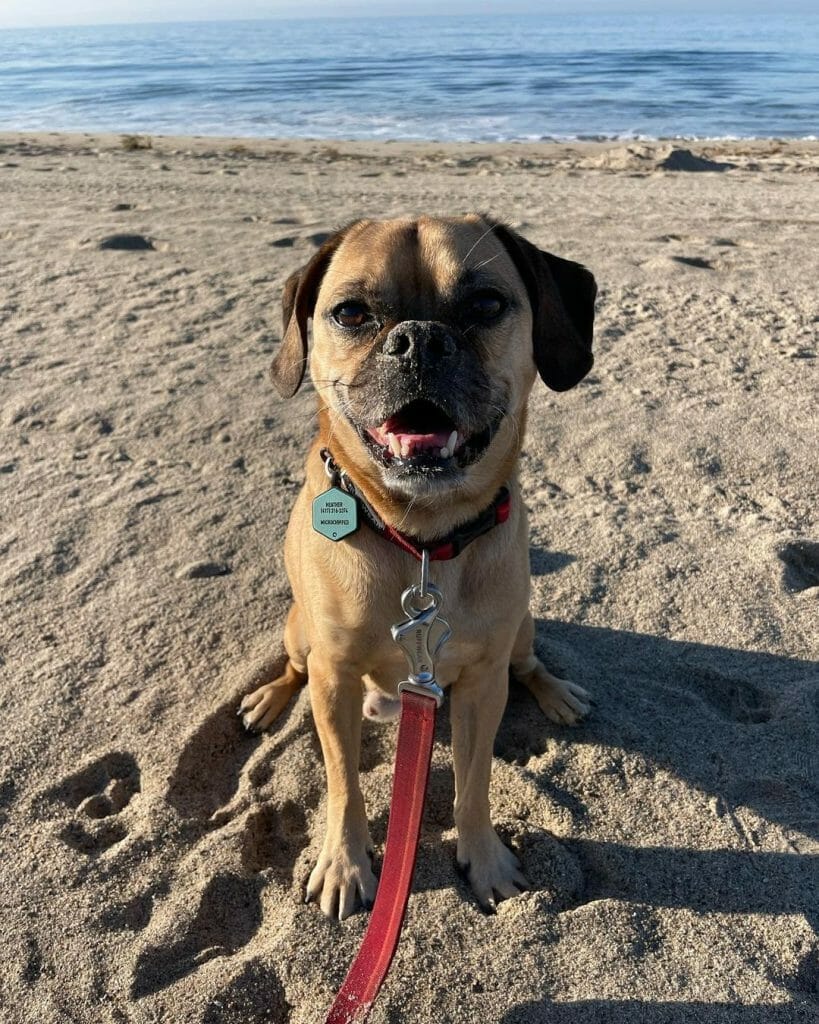

No doubt, Puggles are energetic and active dogs. However, their activity level varies a lot compared to other dog breeds. He has moderate levels of energy, so owners should try to complement this with activities that will not over-exhaust him. Remember, he is a small dog so he will do just fine with a 15-minute walk every day done twice. Let him play off-lead as well in a fenced yard, so he won’t end up getting lost or running away.
Of course, every Puggle is different. Some are mostly hyperactive as what owners would describe their pets, others can be laid-back, while the rest may fall somewhere in between. It really depends since the Puggle has parents that are of different breeds. Considering that genetic temperament exists, the behavior of the Beagle and the Pug parent will highly likely influence and mold that of their offspring.
Care
The Puggle designer dog may be small, but those who think of owning one with the thought that he won’t need as much care compared to other pooches, then this one isn’t for you. However, it is true that he is not too overwhelming to maintain. The Puggle has certain basic requirements so he can continuously live a happy and healthy life.
Grooming
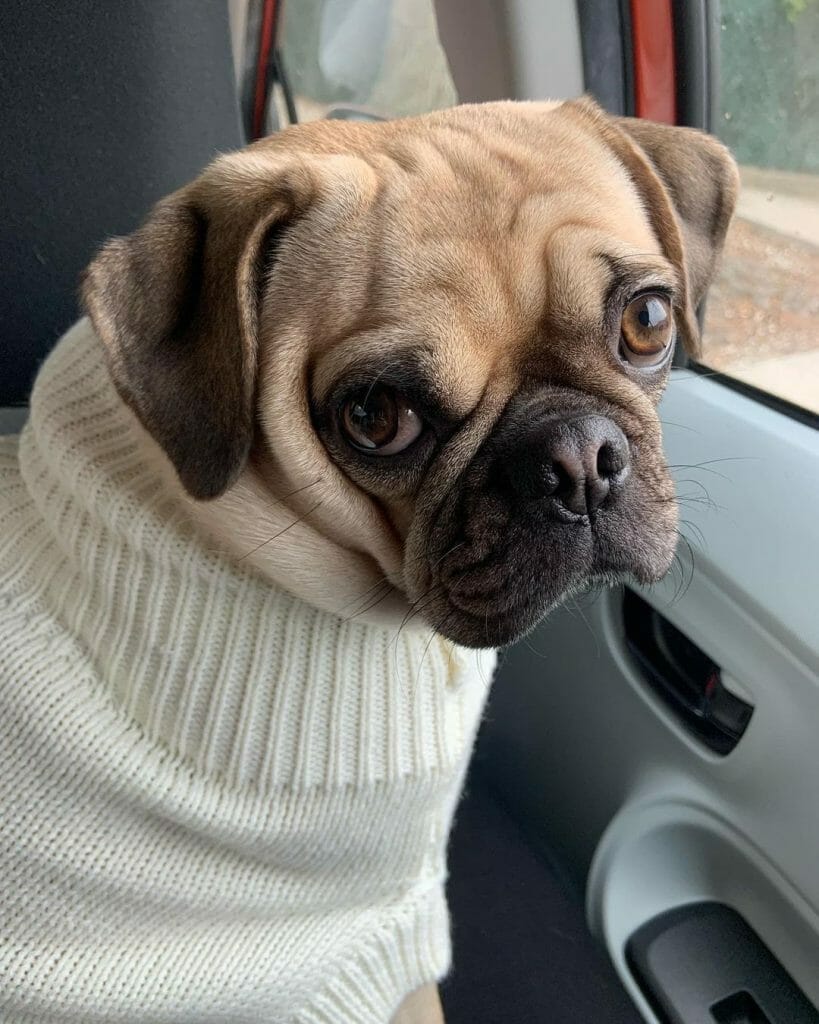

Ready your grooming kit should you bring home a cute Puggle puppy because once he reaches adulthood, he will become a shedding machine! He will regularly take off his coat and hair, as expected, and they will be all over the house in your drapes, couch, carpets, or wherever your Puggle ends up laying. Certain seasons will trigger his body to shed more and they are the spring and fall seasons. Your pooch will have to take off his winter jacket and replace it with a new and lighter one. Eventually, the summer vest will then transition into a jacket once more during the fall season to keep his body warm and heated the moment the cold climate comes.
Make sure that your dog’s grooming tools are complete in his arsenal. A pin brush and a slicker brush from HERTZKO are effective equipment in keeping his shedding in control. All of his loose hairs will be taken off his coat and you can immediately and conveniently throw them in the bin thanks to the self-cleaning properties of these tools. Don’t forget to purchase high-quality Gou Gou nail clippers as well so he won’t have overgrown nails.
Should you brush a Puggle, do so once a week or whatever works for you. Just avoid brushing him very often to keep his coat healthy and free from irritations. Baths are only needed if he is emitting dog odor or he gets dirty after a nice playtime.
Food and Diet
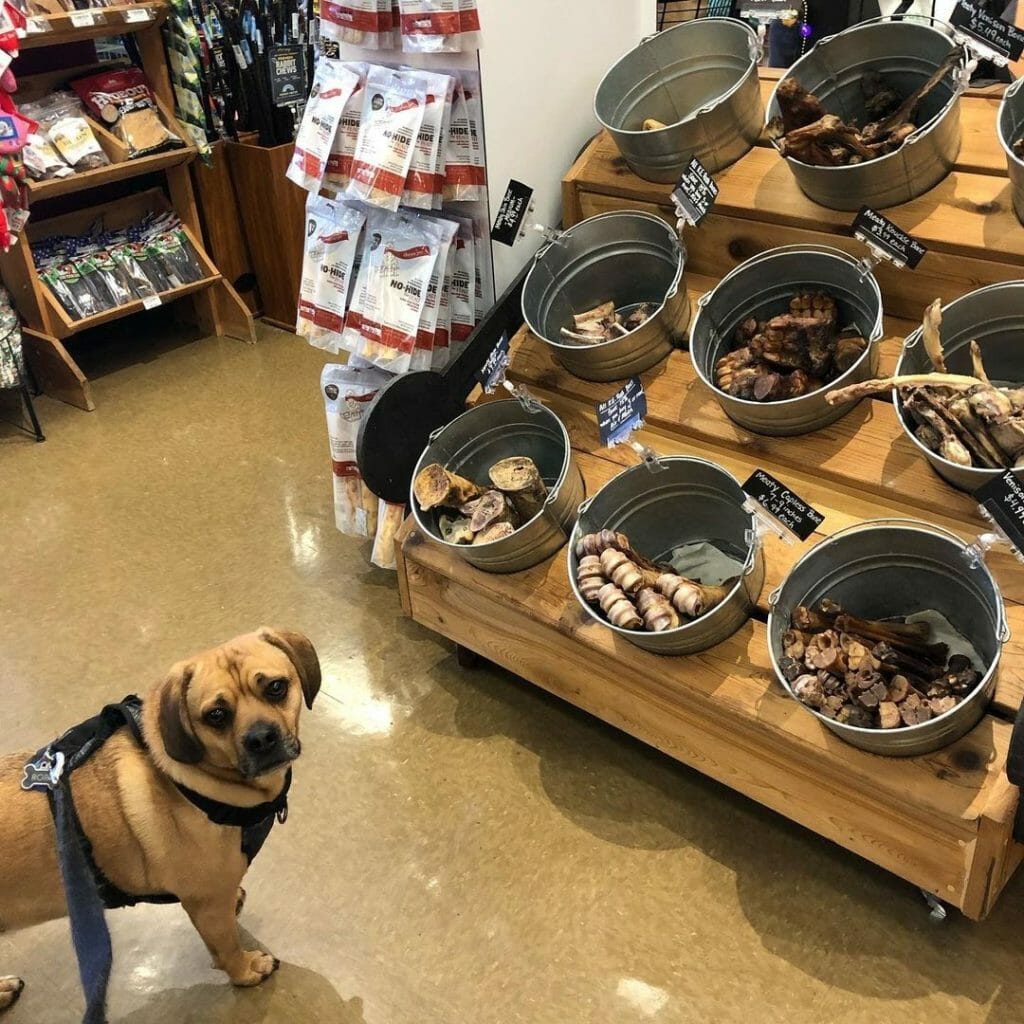

Pugs can be allergic to certain food ingredients like soy, wheat, and corn. If it is found out that the Pug parent has this condition, it is possible that the Puggle puppy will carry the same type of allergies, so consult your vet about what your puppy should consume daily. Anyhow, the best kind of dog food for your Puggle is one that does not contain loads of fillers and artificial ingredients. Dogs of any breed require foods that will provide them with a complete and balanced diet.
Puggles should be fed not only the right amount but also the dog food must be age-appropriate so he will grow without problems in terms of his development. Puppies usually eat more than adults and they need to consume a certain amount of dog meal at least 3 to 4 times a day. As he approaches adulthood, you can just provide him two meals daily every 12 hours.
Be careful not to overfeed him or leave leftovers anywhere since this dog tends to overeat and end up becoming obese. Thanks to his size, a Puggle will only do well in about 2 cups of dry food each day. A raw diet will be fine too, but it needs careful planning to ensure he gets all the needed vitamins and minerals.
Exercise
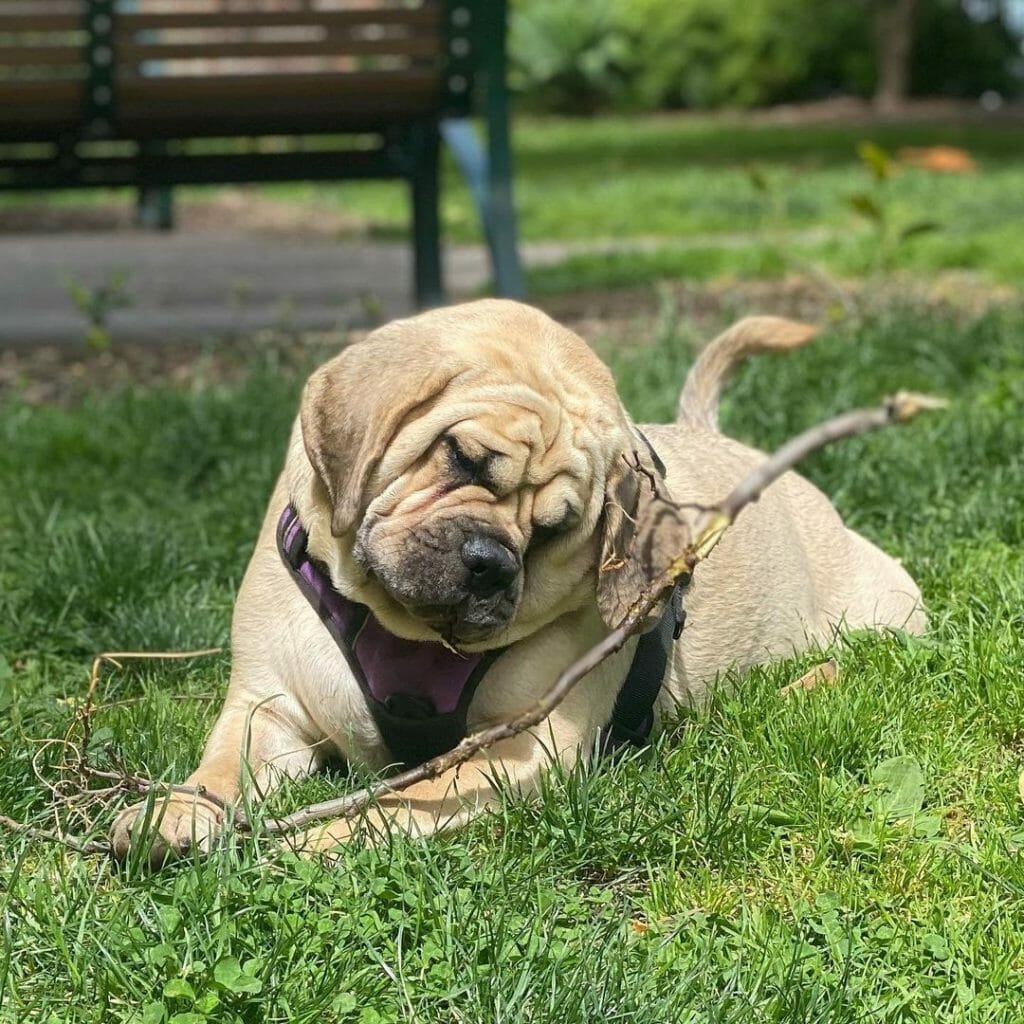

There are various health benefits if you commit your dog to regular exercise daily. If he gets to move and sweat, his muscles and bones will be healthier and sturdier compared to that of a Pooch that lies on the couch all day long. Exercise fills a Puggle with spirit and such an active lifestyle will improve his overall mood. Of course, it is always better if you accompany him in his exercise drills and take part in activities like teaching him how to fetch a stick or a tennis ball or encourage him to enjoy the pool. If you love adventures, the Puggle will certainly enjoy accompanying you on your walk on the beach. Whatever activities that will encourage him to move, your Puggle can keep up.
If you are out and about with this dog, he should always be on a leash or harness. His Beagle ancestry can make him wander off. The Puggle is easily distracted, especially since his nose can pick up scents easily. If you live in an apartment, this dog will adjust to the living situation. Simply ensure that he gets to go outside regularly so he will not end up feeling bored and develop behavioral problems.
Be careful as well not to have him exercise under the blazing sun. A Puggle dog is sensitive to heat. Yards with trees will give him a cool shade so plan out your garden. Free access to water is advised.
Training
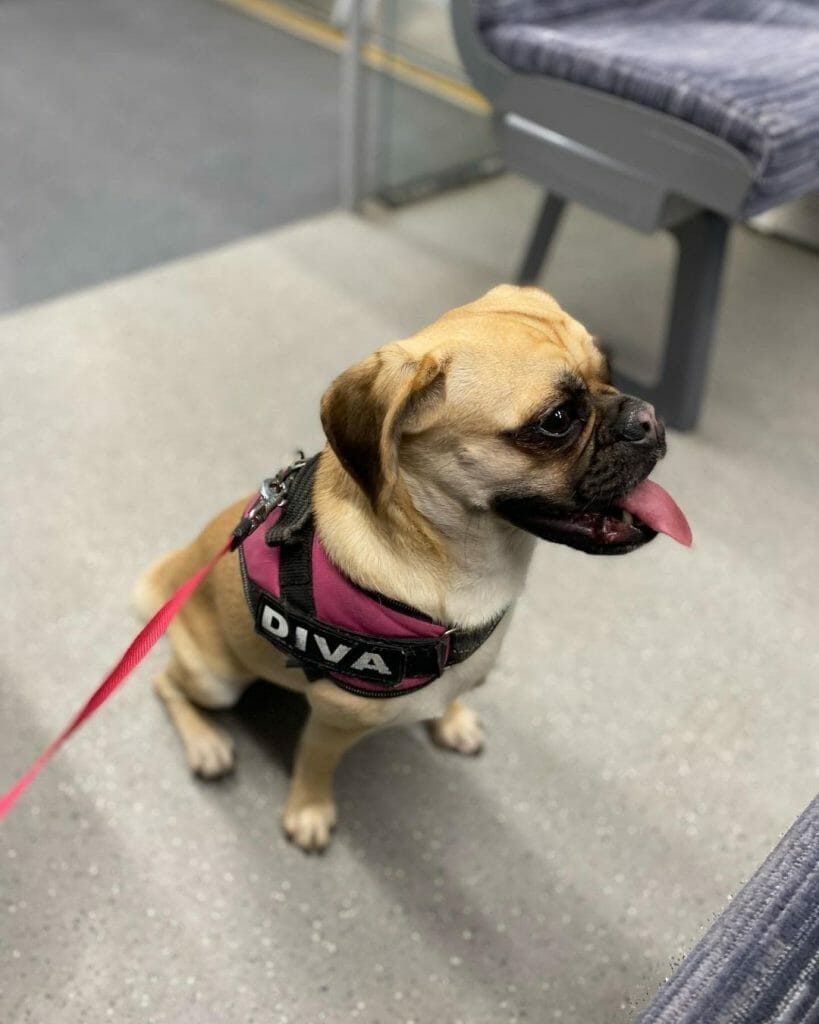

Aside from socialization, Puggles need to be trained in various sorts of skills. Always incorporate crate training, to lessen his chance of developing anxiety. Associate the crate as his safe space and never an area to punish him or put him in a time out. If you have an old dog, he can help teach the Puggle where to pee or poop. Dogs follow behaviors and when they see your older pet do things in special areas, he is more likely to do his necessities in the same spot.
Verbal commands must also be included. Basic words such as “sit”, “stay”, and “no” have to be understood clearly by the Puggle pup. This makes communication much easier. Add in other pieces of training such as leash training, obedience training, and other more essential doggy lessons. Educating a Puggle is not a piece of cake, however. He can be very stubborn and do things his way. Be firm as a leader and avoid giving in to his demands.
Health Problems
Generally, Puggles are healthy as long as they were bred ethically. Both parents should be scanned for any health issues and assessed if they are fit to mate. There are health problems that can affect a Puggle, however, no matter if the parents were healthy. Be aware of what these complications are before considering getting a puppy of this kind:
- Hip dysplasia
- Stenotic nares
- Patellar luxation
- Hypothyroidism
- Epilepsy
- Cherry eye
- Obesity
- Breathing problems
- Dental problems
Pros and Cons of Having a Puggle
Pros
- Highly affectionate
- Very friendly
- Quite active
- Comes in a cute size
- Extremely sociable
- Devoted to his owners
- Excellent cuddlers
- Great with pets
- Gentle with kids
- Intelligent
Cons
- Has a high shedding rate
- Needs monitoring when around kids
- He can be stubborn during training
- Several health issues
- Wary toward strangers
- Not a purebred
Do Kennel Clubs Recognize the Puggle?
Although dog lovers are after the Puggle dog, the American Kennel Club (AKC) refuses to recognize designer dogs like the one mentioned. He may have existed for several decades already, but until now, there are no breed clubs that have ever acknowledged this pooch. No efforts are also made to make him a recognized breed. Some Puggles are a result of breeding Puggles to Puggles or Beagles to Pugs.
Cost
If you like designer dogs, one thing you should know about them is that they are not cheap. The Puggle, for example, can cost you around $1,000 to $2,000 per puppy. The price may either increase or decrease depending on the discretion of the breeder. If the demands are high and the supply is low, reasonably, the price tag can go higher. Breeder’s reputation, location, quality, and several other factors can dictate the overall cost of the Puggle.
If you are looking to save, adopt a Puggle instead. Some are in shelter homes and they are just as good as those which you can buy from a breeder. Generally, you can adopt a puppy for only $75 to $300.
Where to Adopt or Buy a Puggle
Puggles are slowly becoming sensational dogs! They have awesome personalities that are not overwhelming at all. If you think that his temperament and needs match well with your list of preferences, the next big step to take is to bring a Puggle to your home. Below are sources you can check and make sure you research each one thoroughly:
BUY
ADOPT
